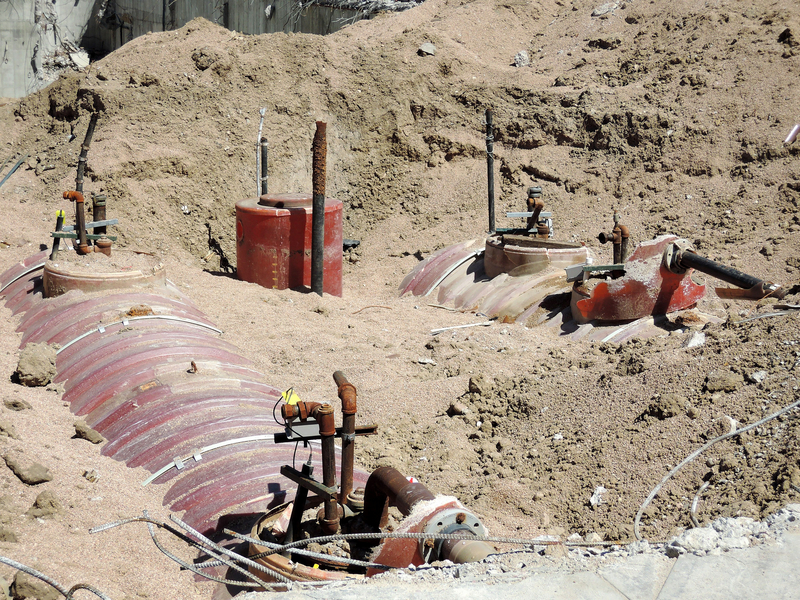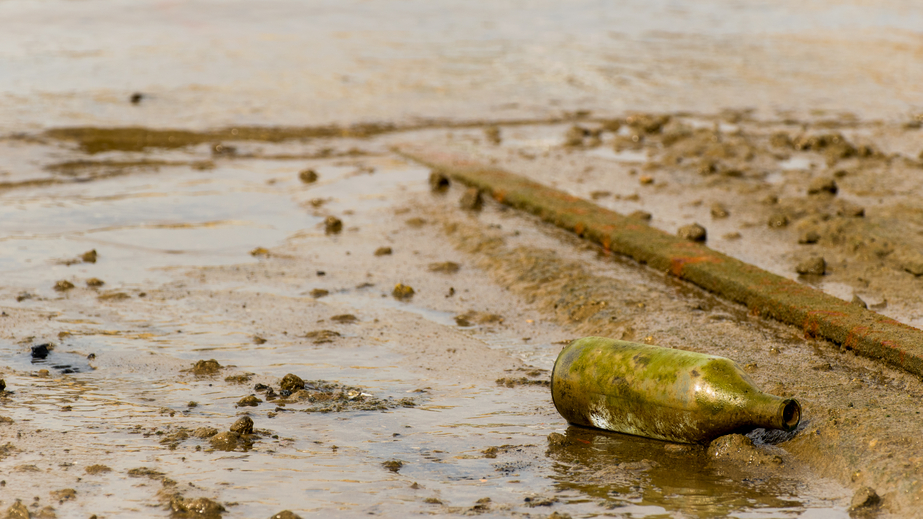North Dakota Environmental and Ethics 30 PDH Discount Package 2
Courses in this Package
Mold Remediation in Schools and Commercial Buildings (C04-049)
Release Detection for Underground Storage Tanks and Piping (C04-050)
Reducing Lead in Drinking Water in Schools and Child Care Facilities (C07-014)
Disposal Technologies for Hazardous and Toxic Waste (C02-006)
Identification and Selection of Remedial Action Alternatives (C08-002)
Natural Attenuation of the Lead Scavengers EDB and 1,2-DCA (C04-047)
Ethical Issue: Deciding if Something is a Gift or a Bribe (LE1-007)

This online engineering PDH course presents guidelines for the remediation/clean-up of mold and moisture problems in schools and commercial buildings. These guidelines include measures designed to protect the health of building occupants and remediators. Individuals with little or no experience with mold remediation should be able to use this course to help them make a reasonable judgement as to whether the situation can be handled in-house. It will also help those in charge of maintenance to evaluate an in-house remediation plan submitted by an outside contractor.
Molds can be found almost anywhere. They can grow on virtually any organic substance if moisture and oxygen are present. There are molds that can grow on wood, paper, carpet, foods, and insulation. When excessive moisture accumulates in buildings or on building materials, mold growth will often occur, particularly if the moisture problem remains undiscovered or unaddressed. It is impossible to eliminate all mold and mold spores in the indoor environment. However, mold growth can be controlled indoors by controlling moisture indoors.
When mold growth occurs in buildings, adverse health problems may be reported by some building occupants, particularly those with allergies or respiratory problems. Remediators should avoid exposing themselves and others to mold-laden dusts as they conduct their cleanup activities. Caution should be used to prevent mold and mold spores from being dispersed throughout the air where they can be inhaled by building occupants.
This 4 PDH online course is intended to environmental and facility engineers, building managers, custodians, and others who are involved in the development and implementation of mold prevention and remediation plans.
This PE continuing education course is intended to provide you with the following specific knowledge and skills:
- Understanding mold preventative measures
- Investigating, evaluating, and remediating moisture and mold problems
- The importance of Personal Protective Equipment
- Developing a Mold Remediation Plan
Upon successful completion of the quiz, print your Certificate of Completion instantly. (Note: if you are paying by check or money order, you will be able to print it after we receive your payment.) For your convenience, we will also email it to you. Please note that you can log in to your account at any time to access and print your Certificate of Completion.

This online engineering PDH course presents information about the 2015 federal underground storage tank (UST) system requirements and regulations. UST and its underground piping must have release detection to comply with federal law. In addition to complying with federal law, some implementing agencies may have additional regulations which apply to the system.
Each of the sections herein focus on one release detection method for underground tanks and/or the requirements for underground piping. You will find answers in this booklet to basic questions about how release detection methods work and which methods are best for your UST site.
As of September 2015, over 528,000 UST releases were confirmed since the UST program was implemented. At sites without release detection, contamination can spread undetected, requiring difficult and costly clean-ups.
If you have effective release detection, you can respond quickly to signs of releases. You can minimize the extent of or eliminate potential for environmental damage and the threat to human health and safety. Early action also protects you from high costs that can result from cleaning up extensive releases and responding to third-party liability claims.
This 4 PDH online course is applicable to petroleum engineers, owners/operators, and personnel involved with the release detection of underground storage tanks.
This PE continuing education course is intended to provide you with the following specific knowledge and skills:
- Learning the basic release detection requirements for underground storage tanks (USTs) and piping
- Understanding the different release detection methods for USTs and choosing the best option for a given application
- Familiarizing with the federal regulatory requirements for release detection
Upon successful completion of the quiz, print your Certificate of Completion instantly. (Note: if you are paying by check or money order, you will be able to print it after we receive your payment.) For your convenience, we will also email it to you. Please note that you can log in to your account at any time to access and print your Certificate of Completion.

This online PDH course examines sources of lead contamination found in drinking water in schools and child care facilities. It features seven modules on how to enact a plan for testing, remediating, and communicating lead contamination in drinking water.
Lead had been widely used in plumbing in the U.S. until it was determined to be unsafe for human consumption. In children, lead exposure can cause reduced IQ and attention span, learning disabilities, poor classroom performance, hyperactivity, behavioral problems, impaired growth, and hearing loss. Thus, it is important to constantly test for, remediate, and communicate any lead contamination in drinking water.
This course maintains that the only way to know if there is lead in drinking water is testing. It provides information on likely sources of lead in a building’s plumbing system and how to sample different sources of drinking water. It also historically contextualizes the presence of lead in plumbing and subsequent phasing out after being determined unsafe for human consumption.
This 7 PDH online course is applicable to environmental, civil, and mechanical engineers as well as other technical personnel who are interested in learning more about eliminating lead sources from drinking water.
This PE continuing education course is intended to provide you with the following specific knowledge and skills:
- Understanding how to sample drinking water for lead and interpret the results
- Understanding the effects of lead exposure on the human body, particularly for children
- Learning about the historical context in which lead was used in plumbing in the U.S. and why it was phased out
- Learning how to develop and enact a plan to test for, remediate, and communicate any lead contamination in drinking water in schools and child care facilities
Upon successful completion of the quiz, print your Certificate of Completion instantly. (Note: if you are paying by check or money order, you will be able to print it after we receive your payment.) For your convenience, we will also email it to you. Please note that you can log in to your account at any time to access and print your Certificate of Completion.

This online engineering PDH course provides guidance for the design of disposal systems. A disposal system is a properly engineered facility used for ultimate disposal of hazardous waste into or on land or water. Disposal systems have general applicability to all types of waste streams.
The different disposal techniques are collectively capable of handling wastes in solid, semisolid, and liquid forms. As many disposal systems have shown migration or dispersion of the contaminants to the surrounding environment, there is usually strong public resistance to siting a solid or hazardous waste disposal facility.
This 2 PDH online course is applicable to civil and environmental engineers, as well as design and construction personnel involved with hazardous and toxic waste treatment and disposal activities.
This PE continuing education course is intended to provide you with the following specific knowledge and skills:
- Onsite disposal techniques
- Offsite disposal techniques
In this professional engineering CEU course, you need to review Chapter 5 of the US Corps of Engineers Publication EM 1110-1-502, "Disposal Technologies".
Upon successful completion of the quiz, print your Certificate of Completion instantly. (Note: if you are paying by check or money order, you will be able to print it after we receive your payment.) For your convenience, we will also email it to you. Please note that you can log in to your account at any time to access and print your Certificate of Completion.

This online engineering PDH course provides technical guidelines that will aid in the identification and selection of remedial actions at uncontrolled hazardous waste sites. It presents information on site-specific corrective measure alternatives including performance of preliminary assessments and site investigations to define the problem and determine its extent; remedial investigations and feasibility studies to develop options for remedial action; and selection of one or more cost-effective remedial actions in support of clean-up activities.
This 8 PDH online course is applicable to civil, environmental or geotechnical engineers, as well as design and construction personnel involved with hazardous and toxic waste remedial activities.
This PE continuing education course is intended to provide you with the following specific knowledge and skills:
- Determination of the nature and extent of contamination
- Establishment of clean-up criteria
- Development and screening of remedial action alternatives
- Detailed analysis of remedial action alternatives
In this professional engineering CEU course, you need to review Chapter 2 of the US Corps of Engineers Publication EM 1110-1-502, "Identification and Selection of Remedial Action/Corrective Measure Alternatives".
Upon successful completion of the quiz, print your Certificate of Completion instantly. (Note: if you are paying by check or money order, you will be able to print it after we receive your payment.) For your convenience, we will also email it to you. Please note that you can log in to your account at any time to access and print your Certificate of Completion.

This online engineering PDH course reviews the current knowledge of the transport and fate of EDB and 1,2-DCA in ground water. It also provides information on the distribution of EDB and 1,2-DCA at motor fuel release sites that was collected during a survey of sites coordinated by the U. S. EPA Office of Underground Storage Tanks and the Association of State and Territorial Solid Waste Management Officials (ASTSWMO) and evaluates the associated chance of contaminating ground water.
Lead was effectively banned in gasoline in the USA before the underground storage tank program was fully implemented. As a result, only a portion of the state agencies that implement the federal UST program routinely monitor for EDB and 1,2-DCA at gasoline spill sites. In many states, little is known of the risk from EDB and 1,2-DCA at old leaded gasoline spill sites. Monitored Natural Attenuation (MNA) is widely used by State Agencies to manage the risk from other fuel components, such as benzene, in ground water. The appropriate application of MNA requires a solid understanding of the behavior of the contaminants in ground water.
This 4 PDH online course is applicable to all civil, environmental or chemical engineers, as well technical personnel who conduct risk evaluations for EDB or 1,2-DCA at specific motor fuel release sites, and for the technical staff of regulatory agencies that review the risk evaluations and make decisions concerning risk management and cleanup of the contamination. It is also useful for those who must apportion resources for monitoring and risk management of the hazard associated with EDB, benzene, and 1,2 DCA in ground water used for drinking water.
This PE continuing education course is intended to provide you with the following specific knowledge and skills:
- Understanding the use of EDB and 1,2-DCA in leaded motor fuel
- Familiarizing with the regulation of motor fuel storage to protect ground water and drinking water
- Learning about investigations of EDB and 1,2-DCA at motor fuel release sites
- Familiarizing with the conceptual model of a motor fuel release in the subsurface
- Learning about attenuation caused by physical processes
- Learning about attenuation caused by abiotic transformation or biodegradation
- Applications of Compound Specific Isotope Analysis (CSIA) to document biodegradation and/or abiotic transformation of EDB and 1,2-DCA
- Understanding the distribution of EDB and 1,2-DCA at motor fuel release sites, and the associated chance of contaminating ground water
Upon successful completion of the quiz, print your Certificate of Completion instantly. (Note: if you are paying by check or money order, you will be able to print it after we receive your payment.) For your convenience, we will also email it to you. Please note that you can log in to your account at any time to access and print your Certificate of Completion.

This online engineering PDH course will establish, through the presentation of many examples, the principles of distinguishing between a gift and a bribe.
The federal government has formulated detailed rules covering gifts given to executive-branch employees in many situations. The rules are published in the Code of Federal Regulations (CFR) and are illustrated through many examples. Even though the examples are intended for government employees (many of whom are engineers), they also apply to private-sector engineers in similar situations. This course presents selected CFR examples that furnish guidance on the ethics of gift giving in situations that are especially relevant to engineers.
This 1 PDH online course is intended for engineers seeking guidance on distinguishing between ethical gift-giving and bribery.
This PE continuing education course is intended to provide you with the following specific knowledge and skills:
- Familiarizing with definitions of a bribe and a gift
- Knowing the bribe status of a gift based on a personal relationship
- Understanding the conditions under which gifts to spouses are acceptable
- Knowing the need to avoid even the appearance of a gift being a bribe
- Recognizing when gifts involving free attendance at meetings and conferences are acceptable
- Understanding the importance of the cumulative effect of receiving even small gifts on a periodic basis
- Learning the importance of gifts received when on assignment rather than outside of work
Upon successful completion of the quiz, print your Certificate of Completion instantly. (Note: if you are paying by check or money order, you will be able to print it after we receive your payment.) For your convenience, we will also email it to you. Please note that you can log in to your account at any time to access and print your Certificate of Completion.